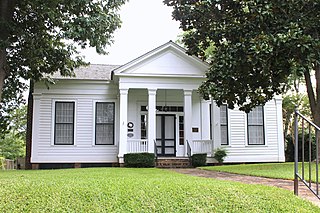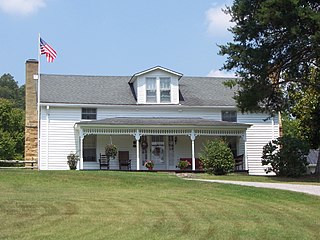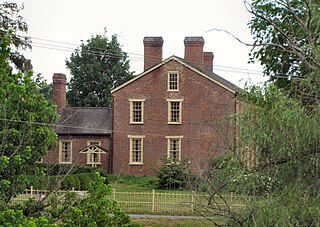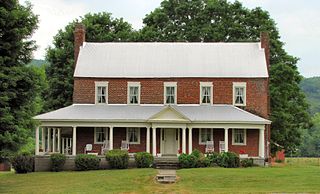
Howard House in Palestine, Texas was built in 1848 by Reuben A. Reeves, Texas State Supreme Court Justice, and justice of the Supreme Court of the New Mexico Territory. When Reeves moved away from Palestine in 1850, the house was purchased by local merchant George R. Howard. Attaining the rank of colonel from his service with the Tennessee State Militia, Howard also served with the Confederate States Army. As a civilian, Howard served in numerous state and local elected positions, including as mayor of Palestine. Upon the deaths of Howard and his wife, the house was inherited by their son Thomas S. Howard. The city of Palestine purchased the house as a museum in 1964. It was listed on the NRHP in 1993.

Woodlawn is a historic house in Nashville, Tennessee, United States.

The Davis-Hull House is a historic house located at 1004 North Main Street in Carthage, Tennessee. It was listed on the National Register of Historic Places on January 4, 1983.

Beech Grove is a historic mansion in Nashville, Tennessee, USA. Built as a log house circa 1850, it was a Southern plantation with African slaves in the Antebellum era. In the 1910s, it became a livestock farm.

The Smith Farmhouse is a historic house in Pasquo, Tennessee, USA.

The Hall-Harding-McCampbell House is a historic mansion in Nashville, Tennessee, U.S..

The Prewitt-Amis-Finney House, also known as Turnhill Farm, is a historic three-story house in Culleoka, Tennessee, U.S.. Built for the slaveholding Prewett family in 1810, it was established as a mule farm. It is located a few miles away from Columbia, and it overlooks Fountain Creek.
Ewing Farm is a historic farmhouse three miles away from Lewisburg, Tennessee, US.
The Absalom Scales House is a historic house in Eagleville, Tennessee, U.S..
The Enoch H. Jones House, also known as the Harvey House, is a historic house in Murfreesboro, Tennessee, U.S.. It was built as a log cabin in 1796 for Ezra Jones, his wife Margaret Hunt and their six children. Their son Enoch served in the War of 1812 and married Eunice Macklin, with whom he had six children. He owned 14 slaves by 1840, and he was active in the Whig Party. By 1850, he redesigned the cabin as an I-house with a portico in the Greek Revival architectural style. The house has been listed on the National Register of Historic Places since August 25, 1995.

The Brown-Chenault House, also known as Campbell Farm, is a historic house in Castalian Springs, Tennessee, U.S..
Greenfield, also known as the David Chenault Home, is a historic farmhouse in Castalian Springs, Tennessee, U.S..
The Dr. Richard Calvin Bromley House, also known as Hotel Bromley, is a historic house in Flatwoods, Tennessee, U.S..

The Thomas Telford House is a historic house near Limestone, Tennessee, U.S..

Richland is a historic farmhouse in Blaine, Tennessee. It was built by slaves circa 1796 for Major Lea and his wife, Lavinia Jarnagin. They had 11 children, including Pryor Lea, who grew up on the farm and later lived at Lea Springs; he became a legislator in Tennessee and Texas. Another son, Albert Miller Lea, served as a major in the Confederate States Army during the American Civil War of 1861-1865 and later lived in Corsicana, Texas.

Villa Mira Monte is a historic villa in Morgan Hill, California, which is listed on the National Register of Historic Places. It was built for Hiram Morgan Hill, founder of Morgan Hill, and his wife Diana Murphy Hill, a Californio heiress.

The Childress House is a historic house in Fayetteville, Tennessee. It was built for the Childress family in the 1820s. It is listed on the National Register of Historic Places.

The Isaac Conger House is a historic house in Fayetteville, Tennessee. It was built in 1808 for the Conger family. It is listed on the National Register of Historic Places.

The Hugh Bright Douglas House is a historic house in Fayetteville, Tennessee. It was built in 1894 for a Confederate veteran. It is listed on the National Register of Historic Places.
Pinewood was a mansion on a former plantation in Nunnelly, Tennessee. Built in 1868, it was restored by Lipscomb University dean Mack Wayne Craig in the late 1960s and 1970s, and it burned down in 1975. It was listed on the National Register of Historic Places.










